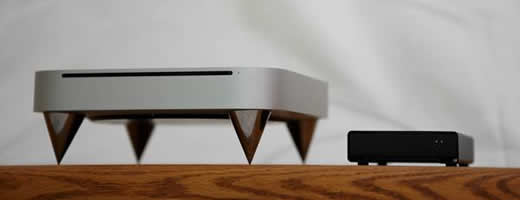Some of your arguments do not make sense to me. If track by track ripping will sound different compared to whole disk ripping, the only explanation is the root data should not be the same compared to original data on the disk ie different 1,0 otherwise you can not expect the sound should be different if ripped data is identical. If you were right, ripping a software to the computer on whole disk mode would cause problems compared to rip track by track as the original data would not be similarly copied. So far after tons of ripped software on desktops, laptops, I have never faced with an issue.
This is a memory retention issue on the ripping hardware.
That's the reason why refreshing the PC/laptop prior to playing a track or ripping a track can sound so much better.
It is very easy for you to verify this.
Tried it on an optical player first, whereby refreshing can be done in a matter of seconds.
On your xds player, play a sacd disc in the similar method I've mentioned.
That means powering down the player then powering up again. Make sure the disc is not left inside while doing this.
After the player has fully powered up and settled, (that means hearing that "click" to indicate the analog stage has settled) Then load in the disc.
Let the player read TOC and fully settle.
To commence playing the disc, press SKIP FORWARD and PLAY in quick succession
It's best to use a finger from each hand.
After playing for 1 or 2 minutes. Stop the disc.
Now play the disc again (without the refreshing).
Use the exact same track cueing method as above to ensure all things except the refreshing part remains constant.
You should be able to hear differences in soundstaging and airiness.
I am suggesting you try the above with a sacd disc instead of a RBCD disc because of my experience with the dac2x loosing sync when using a RBCD. Maybe you won't have this problem on your xds1 v2. Maybe the problem is also there, but the 1box player doesn't have the same indication as on the dac2x. I had the original xds1 before. I sold it before I could verify whether it had this issue as well.
Provided you followed the procedures as mentioned above, then the only differences is whether the player was refreshed prior to playing the disc.
The differences you hear will be the result of memory retention in the servo control of optical disc players/transports.
Once you know what to listen for, you can move on the laptops/pcs
Try playing a digital file with the hardware fully refreshed first.
Then listen again when you play that same file without refreshing the hardware.
Again, if you know what to listen for, you can then move on to check ripping quality with and without refreshing.
By then, you'll probably know what to listen for when you compare ripping by disc and ripping by track basis.
The only way you are going to understand what I am saying here is for you to try.











